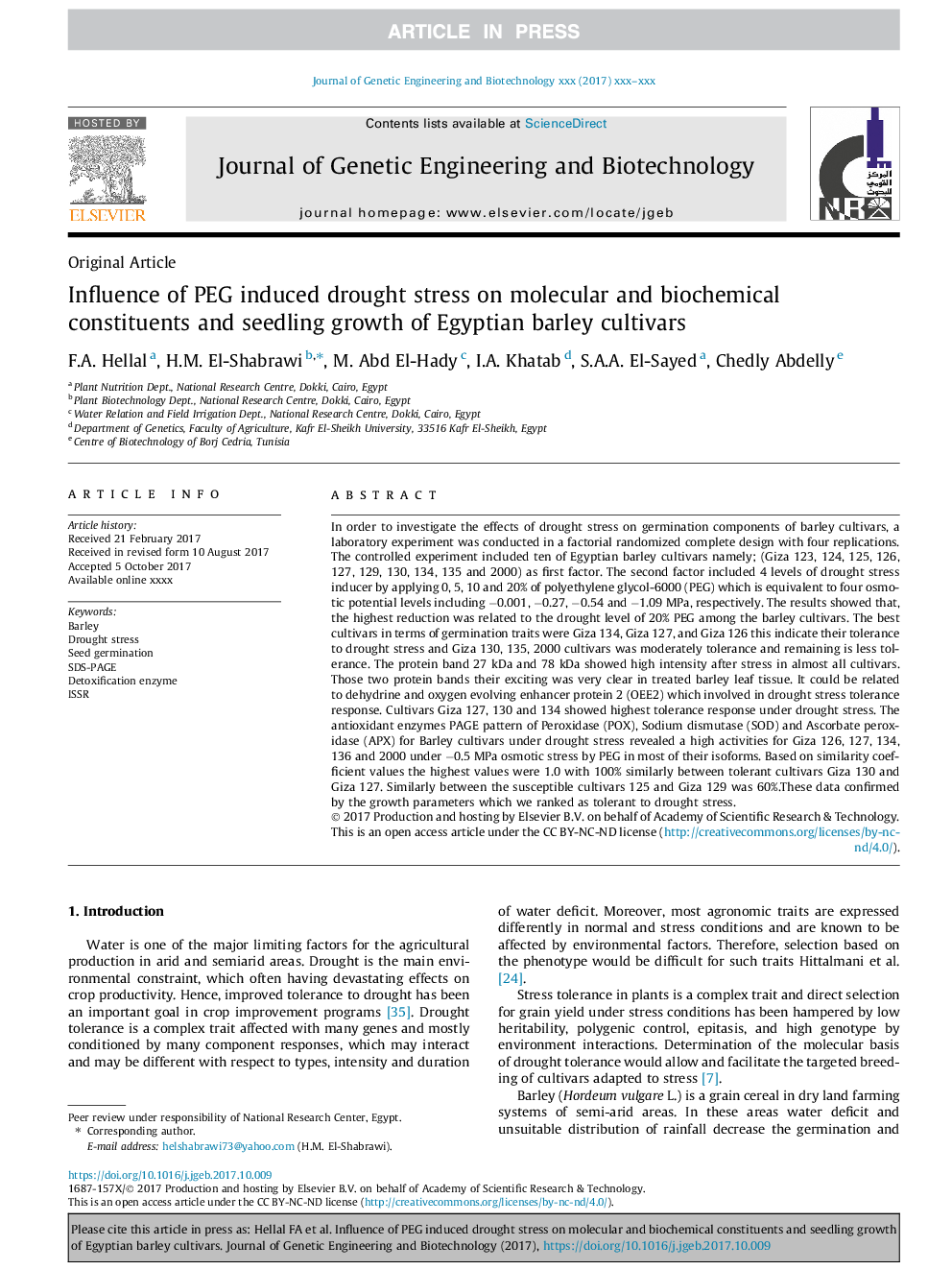| Article ID | Journal | Published Year | Pages | File Type |
|---|---|---|---|---|
| 8416382 | Journal of Genetic Engineering and Biotechnology | 2018 | 10 Pages |
Abstract
In order to investigate the effects of drought stress on germination components of barley cultivars, a laboratory experiment was conducted in a factorial randomized complete design with four replications. The controlled experiment included ten of Egyptian barley cultivars namely; (Giza 123, 124, 125, 126, 127, 129, 130, 134, 135 and 2000) as first factor. The second factor included 4 levels of drought stress inducer by applying 0, 5, 10 and 20% of polyethylene glycol-6000 (PEG) which is equivalent to four osmotic potential levels including â0.001, â0.27, â0.54 and â1.09 MPa, respectively. The results showed that, the highest reduction was related to the drought level of 20% PEG among the barley cultivars. The best cultivars in terms of germination traits were Giza 134, Giza 127, and Giza 126 this indicate their tolerance to drought stress and Giza 130, 135, 2000 cultivars was moderately tolerance and remaining is less tolerance. The protein band 27 kDa and 78 kDa showed high intensity after stress in almost all cultivars. Those two protein bands their exciting was very clear in treated barley leaf tissue. It could be related to dehydrine and oxygen evolving enhancer protein 2 (OEE2) which involved in drought stress tolerance response. Cultivars Giza 127, 130 and 134 showed highest tolerance response under drought stress. The antioxidant enzymes PAGE pattern of Peroxidase (POX), Sodium dismutase (SOD) and Ascorbate peroxidase (APX) for Barley cultivars under drought stress revealed a high activities for Giza 126, 127, 134, 136 and 2000 under â0.5 MPa osmotic stress by PEG in most of their isoforms. Based on similarity coefficient values the highest values were 1.0 with 100% similarly between tolerant cultivars Giza 130 and Giza 127. Similarly between the susceptible cultivars 125 and Giza 129 was 60%.These data confirmed by the growth parameters which we ranked as tolerant to drought stress.
Related Topics
Life Sciences
Biochemistry, Genetics and Molecular Biology
Biotechnology
Authors
F.A. Hellal, H.M. El-Shabrawi, M. Abd El-Hady, I.A. Khatab, S.A.A. El-Sayed, Chedly Abdelly,
